The Spiked Heel Read online
Page 4
“This is Prefitting,” Griff explained. “I want to show you the Leather Room first, and then the Cutting Room. We’ll come back to this later. Want to follow me?”
“All right,” McQuade said. An excited look had come into his eyes, igniting the gray. The excitement spread to his mouth and even to his shoulders. He licked his lips briefly, took a last look at the sewing machines, and then followed Griff, unaware of the head turnings and sudden conversation at the sewing machines behind him.
“After a shoe is priced,” Griff said over his shoulder, raising his voice in competition with the sudden bustle, “Production makes out a ticket on it. We call this the work ticket, and it outlines every operation that must go into that particular pair of shoes, the leather needed, the fabric, the buckles or trim, the piping; in other words—”
“Every single pair of shoes gets a work ticket?” McQuade asked. Griff looked at him, seeing his excitement.
“No, no, every lot does,” he said. “A lot is fifteen pairs.”
“Yes, I know,” McQuade said, swiveling his head to look at one of the sewing machines.
“A run is something else again,” Griff said, not at all sure that McQuade did know. “A run can be any number of lots, do you see? But every fifteen pair of shoes must have a different case number. A fifteen-pair lot will be numbered, hypothetically, three hundred dash six twelve. The next fifteen pairs will all be numbered three hundred dash six thirteen, do you see? Every factory last has a number, and every shoe we’ve ever made has a style number. But the case number is the important thing. Given the case number, we can trace any shoe this factory ever made.”
“I see,” McQuade said, nodding.
“The Leather Room is up ahead here.” He led McQuade past the benches and benches of cutters, benches against the windows, and benches flanking aisles. At each bench, a man worked busily.
“These men are all pieceworkers,” Griff explained. “That’s why they rush so. They do a good job, though. Here’s the Leather Room.”
He stopped in the doorway where a wire grille partition divided the Leather Room from the Cutting Room.
“The leather and fabrics come up here from our big leather room on the main floor. You’ll see a lot of pastels and patents and fabrics right now because we’re still cutting our spring line. Naturally, you see some of those all year round because we’re always doing resort work, too. But you won’t find, for example, much alligator or lizard at this time of the year. Those are mostly fall and winter wear, and we won’t be cutting those for a while yet.”
“Of course,” McQuade said, standing in the doorway, his wide shoulders almost touching either side of the frame.
“These boys you see,” Griff went on, “are getting the materials for the cutters. When the work ticket comes down from Production, it indicates just what materials are to go into the shoe. Here, I’ll show you.” He reached out and caught one of the runners by the elbow. “Jimmy,” he said, “may I see that ticket, please?”
“Yes, Mr. Griffin,” the boy said and then he glanced quickly at McQuade, his eyes wide. McQuade smiled at him, and the boy seemed to regain some of his composure.
“See,” Griff said, “this is a work ticket.” The ticket was a pink card. “Everything is copied onto this ticket from the original order blank our territory salesmen sent in, after I price the order, you understand. Here, take a look at it. Up here in the left-hand corner, the pairage: fifteen. That means there’s only one lot in this particular run. Pattern, well, this is the pattern number, Mr. McQuade, I’ll show you how that’s utilized in a moment: 4517. And right here is the date: 2/26. That’s today, the day we start production on this run of shoes. And here’s the last number, and the style number, and stamped here in the right-hand corner is the case number, 363-201, and alongside that, the price of the shoe, thirteen seventy-five. That’s only half the ticket, you see. The other half has all the operations listed in detail, and each piece-worker clips off the section of the ticket pertaining to his operation and saves it. He turns those in to his foreman, and he gets paid on the basis of the number of tickets he’s clipped, each ticket representing so many cents. The Payroll Department tallies that. When this ticket finally comes back upstairs to me, I’ll see only this half of it. The other half will have been clipped away as the shoe progresses through the factory. Do you understand?”
“This left-hand side will survive,” McQuade said, “is that it?”
“Yes, yes. Now, look here at this left-hand side again. Beneath the information we just read, we have this information,” and he held out the card:
CUTTING
VP & QTR—
800/61 PEKING BLUE SHANTUNG.
McQuade looked at the space on the ticket.
“This is information for the Leather Room primarily. When they see this, they know the cutters will cut a vamp and quarter from Peking Blue shantung. The ‘eight hundred sixty-one’ is just our house number for the fabric. Every material we use has a house number. Clear?”
“Very,” McQuade said, smiling. “You really do know the factory, don’t you, Mr. Griffin?”
“Well,” Griff said, smiling modestly. “Here now, right under that, it says the following:”
LININGS
WHITE 3612 BACKSTAY
LEA VP LING
507 x-22 POWDER BLUE SOCK.
“I see,” McQuade said, studying the ticket.
“This just tells them what materials to cut for the inside of the shoe. The lining will be white, with a leather vamp lining. The backstay …” Griff paused. “You know, I’m talking as if you know what this is all about, and perhaps making playshoes and men’s shoes is entirely different—even in terminology. Shall I give you a rundown?”
“If you like,” McQuade said.
“Well … let’s see, hardly know where to begin. The vamp. Picture a shoe, and then divide it in half, across the instep. The forward half, where your toes are, is the vamp. From there back and around the heel is the quarter. The section where the instep is, we sometimes call the shank because … oh hell, I imagine it’s the same with all shoes.”
“Well, more or less,” McQuade said vaguely.
“I was telling you about the backstay. It’s a piece of leather put into the quarter. That keeps the shoe on the foot, in addition to the counter.”
McQuade blinked.
“There’s something you wouldn’t know about in casuals,” Griff said. “A counter. It’s just a hard piece of leather which is put into the shoe so that the quarter hugs the foot, and the shoe won’t stretch and slip off after a few wearings. You’ll find a counter on each side of the quarter of any quality shoe.”
“Thank you, sir,” McQuade said, executing a small smiling bow.
Griff smiled, too. “Not at all. Here, back to the ticket again. This tells them which sock lining to cut, and here are the pattern numbers to be pulled for cutting vamp and quarter, and vamp-and-quarter fleece, and … oh, everything’s on this ticket; see, here are the instructions for the Fitting Department, ‘Grograin binding on vamp and quarter,’ with ‘Trade accessories number thirty-two-B midnight blue,’ that may be a little bow or a sprig of flowers or a bell or whatever-the-hell; well, I’m sure this ticket doesn’t interest you, but it’ll give you some idea, anyway.” He handed the ticket back to the boy.
“Thanks, Jimmy,” McQuade said.
Jimmy nodded and rushed off to gather up his materials.
“And from here,” McQuade said, “the leather or fabric is taken to the cutters, is that right?”
“Yes, exactly. Do you see those boys and girls running around in the aisles? They’re pulling patterns from the drawers in the benches. By the time the leather is brought to the cutter, the patterns are waiting for him, too, and he can get right to work on the job. Remember the pattern number I showed you on the ticket? Well, that pattern is pulled from the drawers there. It’s made out of a hard cardboard composition, bound in brass so the cutters’ knives won’t ruin it
after one or two uses.”
McQuade nodded.
“Well, come on over. The older cutters are working on the right, over there. They handle all the expensive materials, where mistakes would be costly. Like Spanish Sapphire silk, for example. We couldn’t trust that to an apprentice cutter. Or even lace, for that matter. Cutting reptiles is a different story. When we’re cutting alligator, say, we put the men on time. We can’t afford the rushing that accompanies piece-work, not with reptile skins as high as they are. Now, the apprentice cutters are over here. They’re cutting linings and fleece and backstays and sock linings and cushions and some of the cheaper fabrics for uppers. They’re not as good as our older cutters, you see, but they learn by experience. Come on over and we’ll watch one.”
They worked their way over through an aisle, dodging the runners who were carrying armloads of fabric and leather, dodging the boys and girls who were busily extracting patterns from the drawers.
Griff stopped alongside one of the cutters, a muscular boy who stood almost as tall as McQuade, black hair curling on his head and in the open V of his shirt collar. His sleeves were rolled up, and his sinewy arms were covered with the same dense black growth.
“Hello, Charlie,” Griff said. “How goes it?”
Charlie Fields looked up quickly. “Oh, hello, Mr. Griffin,” he said. Griff was surprised at the formality because he knew Charlie well, and they’d been on a first-name, coffee-drinking, dirty-joke-telling basis for a good long while now. Charlie glanced uneasily at McQuade then, and Griff suddenly got the picture. He remembered Max’s cool formality in the elevator, and Jimmy’s nervousness just now in the Leather Room, and then he remembered telling Benny Compo about the visitor from Georgia. Benny had probably passed the word to the other foremen, and the word had sped along the factory floors. Titanic is here; on your toes! And, forgetting his own earlier panic, Griff found the factory reaction somewhat amusing. Jefferson McQuade was turning out to be a hell of a nice guy, and there was certainly no reason to fear him.
“Charlie,” he said, “would you mind showing Mr. McQuade that knife you’re using?”
“Not at all,” Charlie said nervously. He picked up the knife from the cutting bench and handed it to Griff handle-first. The handle looked like the wooden handle of a manual can opener, round and squat. The blade was a short, hooked piece of curving metal, looking like an extended half moon.
“This is razor-sharp,” Griff said. “It has to be in order to cut through some of the leathers that come out of the Leather Room.”
McQuade-glanced at the knife and then took it from Griff, hefting it on the palm of his hand, as if he were choosing a weapon for a duel. “It looks sharp enough,” he said respectfully.
“What are you cutting, Charlie?” Griff asked.
“Sock linings,” Charlie said. “Shall I cut one for you, Mr. Griffin?”
“Would you, please?”
McQuade handed the knife back to Charlie, and Charlie picked up the brass-bound pattern of the sock lining and placed it on the pale blue fabric. Quickly and expertly, he traced the pattern with the sharp edge of the cutting knife. He pulled the pattern away then and lifted the gracefully feminine sock lining from the bench, leaving the imprint of the sole in the remainder of the fabric, like a wet footprint on a blue tile floor.
“Simple as that,” Griff said. “Thanks, Charlie.” He turned back to McQuade and said, “All of those people are doing the same thing, cutting. Come along, will you?”
McQuade turned his head over his shoulder and smiled. “Thanks for your trouble, Charlie,” he said, and followed Griff.
“So, that’s the Cutting Room,” Griff said, walking over toward the sewing machines, “and here’s Prefitting, where all these girls are working. They do the very basic putting together, the elementary stuff, stitching vamp to quarter, and upper to lining, oh, all the preliminary work before the material goes down to Fitting on the seventh floor. Come on over and take a look.” He led McQuade to one of the sewing machines, and the girl at it looked up and then lowered her eyes quickly. Her hands fumbled with the shoe upper as she placed it in position under the needle, ready to stitch it to the lining. McQuade watched attentively for a moment, and Griff said, “That’s all there is to it. We can take the stairway down, if you don’t mind.”
“Not at all,” McQuade said.
He took him down to Fitting, and he heard his own voice droning on, explaining, explaining. McQuade’s face became expressionless. At regular intervals, he asked interested, pertinent questions, or nodded, or said, “I see,” or “Of course,” or “I understand,” or “Yes,” or “Uh-huh,” but his face remained expressionless throughout the tour.
“… putting in the steel shank here in this department. You’ll never find this in a cheap shoe, Mr. McQuade. This piece of steel in its sleeve is put into the breasting of the shoe here, so that the shoe won’t snap in two some day. Then this cork is glued on either side of the shank, to level it off so that the heel and sole can be …”
“Yes, I see.”
The smells of the factory assailed their nostrils, a new smell, a different smell for each department, the smells Griff would never tire of, the smells he loved. The smell of good rich leather, and the smell of benzine, and the smell of rubber cement, and the smell of ether, and the smell of compo, and the smell of machines and men.
“… is where the sole is glued to the shoe. You’ll see here on the assembly line these leather cushions which inflate with air and press the glued sole tightly to the inner sole. The last, you understand, is still in the shoe during all these operations. The last is not pulled until later. You saw how the uppers were tacked to the last upstairs, remember? That machine that spits tacks into the leather? Well, that last is not removed until the shoe …”
“Of course.”
And the sights of the factory. The fellow doing pinking, with a collection of Marilyn Monroe pinups behind his machine, arranged with painstaking care on two large sheets of cardboard, the most famous pose placed prominently in the center. The old newspapers tacked on the wall behind a machine in the Stock-fitting Department: YANKEES WIN.—IT’S IKE!—SKIRTS GO HIGHER THIS YEAR. The nude calendars everywhere. In Assembly, a calendar exhibiting a naked girl with really remarkable mammary glands, a calendar distributed by GRAINGER’S HARDWARE COMPANY, and on either side of the girl’s magnificent body, the penciled comment: “Some hardware!” The sink near the stairway leading down from Lasting, a dirty, filth-encrusted. sink above which a crayoned sign warned: “Keep this sink clean; It is used by lasters and bed lasters. Thank you.” The union posters on every floor of the factory, the fire hoses in the hallways, the numbers on the racks, 15, 16, 17, announcing the priority each lot of shoes enjoyed, gaily printed on green, yellow, and pink cards.
And the people. The people of the factory. The people bent over glue pots, their fingers encrusted with the stuff. The people shoving leather soles into folding machines, the people stitching and the people sewing, and the people trimming and cutting and stamping and wiping and binding and cleaning and drying and tacking and pulling and talking and laughing; the Puerto Rican women with their full breasts in low-cut smocks, the sweat beaded on their breasts, the gold crosses dangling in the valley of shadow; the mental defective on the fourth floor whom one of the Kahns had hired out of generosity, pushing his racks full of shoes; the people clipping tickets, pink shreds and white shreds, shreds that meant money, one cent, or one cent four mills, or two cents, or two cents two mills, clipped from the work ticket and shoved into a bench drawer, or put into a cigar box, people doing their jobs quickly, adding up the cents, adding up the tenths of a cent; the man at the sanding machine, expertly smoothing the breasting of a shoe, his fingers wrapped in adhesive bandages to forestall any accidents; the man standing near the Muller machine, the machine inoperative, its wide doors open, its red bulb glowing, its leather hanging inside like sides of miniature beef in a butcher shop, waiting to be softened. The people,
the people sweating and grinning, intent or indifferent, their laughter suddenly silenced whenever the man from Titanic walked through the floor.
“… man runs that flame over the finished shoe, trimming off all the hanging threads and whatnot.”
“Doesn’t the flame hurt the shoe?” McQuade asked.
“It can hurt it,” Griff said, “but this man knows his job.”
“I see.”
“This is really the manicuring department, you understand. The shoe is really finished for all intents and purposes here, dressed up, so to speak. There, see that fellow spraying those black kids with lacquer? He’s freshening up the shoe before it gets packed into its box.”
“Of course.”
And the sounds of the factory. The giant hum of the big machines, and the high soprano of the sewing machines; and the bell ringing over and over again when they were on the third floor, summoning someone to the foreman’s cage, and the telephone shrilling on the fifth floor; and the tacking machines spitting their tacks, clanging their tacks with a sudden rush, sticking the upper to the last; the whir of the drill in the Heeling Department, the bit sinking through the metal-lined hole in the last, penetrating into the wood of the heel, the screw with its open circular top following the drilled hole; the pneumatic hiss of inflated leather in the Soling Department; the radios on every floor; and the cackle of the old women, and the whispers of the young women, and the raucous laughter of the men; and the clash of the elevator doors, the rasping stealth of a cutting knife.
“… down the chute here into the Stock Room. We keep all our stock shoes here. And then through this door here is the Shipping Room, see those machines stapling the cartons shut there, and, oh, yes, Piping and Stripping is on this floor, too, a little factory of its own, where all the scraps from upstairs are made into …”
“I see.”
And finally it was all over. McQuade looked a little dazed, as if the three hundred and twelve operations that went into the building of a single pair of shoes had been a little too much for him to absorb. Griff could understand his bewilderment. He was exhausted himself. He suggested a cup of coffee and they made their purchases at the lunch counter and were heading for the room behind the counter when McQuade said, “Let’s take it up to the office, shall we?”

 Alice in Jeopardy: A Novel
Alice in Jeopardy: A Novel The Frumious Bandersnatch
The Frumious Bandersnatch The McBain Brief
The McBain Brief He Who Hesitates
He Who Hesitates Mischief
Mischief Fat Ollie's Book: A Novel of the 87th Precinct
Fat Ollie's Book: A Novel of the 87th Precinct A Matter of Conviction
A Matter of Conviction Ice
Ice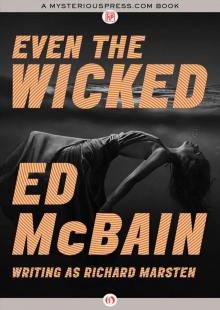 Even the Wicked
Even the Wicked Hark!
Hark! Long Time No See
Long Time No See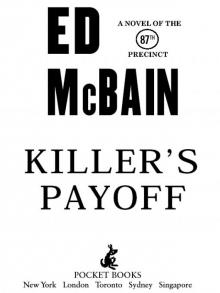 Killer's Payoff
Killer's Payoff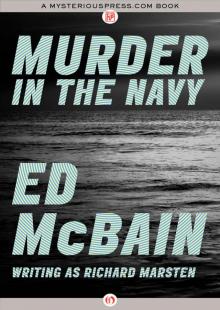 Murder in the Navy
Murder in the Navy A Horse’s Head
A Horse’s Head So Nude, So Dead
So Nude, So Dead Nobody Knew They Were There
Nobody Knew They Were There Alice in Jeopardy
Alice in Jeopardy 87P14-Lady, Lady, I Did It!
87P14-Lady, Lady, I Did It!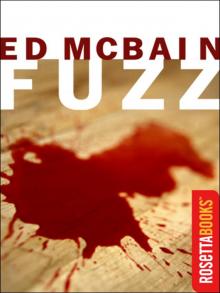 Fuzz
Fuzz Jack and the Beanstalk (Matthew Hope)
Jack and the Beanstalk (Matthew Hope) Ghosts
Ghosts Like Love
Like Love Cut Me In (Hard Case Crime)
Cut Me In (Hard Case Crime) The Heckler
The Heckler Give the Boys a Great Big Hand
Give the Boys a Great Big Hand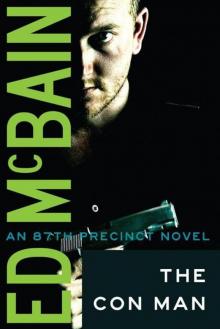 The Con Man
The Con Man Masters of Noir: Volume One
Masters of Noir: Volume One Money, Money, Money
Money, Money, Money Lightning
Lightning Ax
Ax The Spiked Heel
The Spiked Heel Scimitar
Scimitar Every Little Crook and Nanny
Every Little Crook and Nanny Criminal Conversation
Criminal Conversation Doors
Doors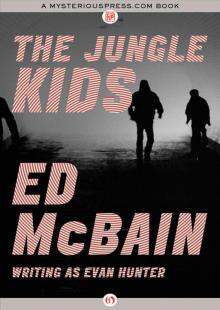 The Jungle Kids
The Jungle Kids Hail to the Chief
Hail to the Chief Pusher
Pusher Killer's Choice
Killer's Choice Transgressions Volume 2
Transgressions Volume 2 King's Ransom
King's Ransom The Last Dance
The Last Dance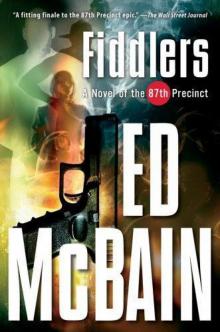 Fiddlers
Fiddlers Don’t Crowd Me
Don’t Crowd Me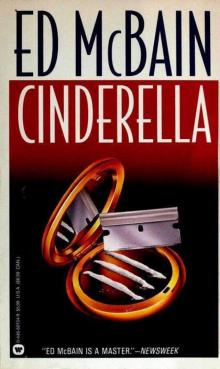 Cinderella
Cinderella Eight Black Horses
Eight Black Horses Big Man
Big Man Vanishing Ladies
Vanishing Ladies Lullaby
Lullaby Privileged Conversation
Privileged Conversation Transgressions, Volume 4
Transgressions, Volume 4 The Mugger
The Mugger Tricks
Tricks Shotgun (87th Precinct)
Shotgun (87th Precinct) Hail, Hail, the Gang's All Here!
Hail, Hail, the Gang's All Here! Ten Plus One
Ten Plus One Fat Ollie's Book
Fat Ollie's Book See Them Die
See Them Die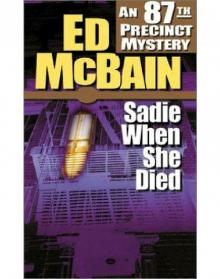 Sadie When She Died
Sadie When She Died Til Death
Til Death Transgressions Vol. 3: Merely Hate/Walking the Line/Walking Around Money
Transgressions Vol. 3: Merely Hate/Walking the Line/Walking Around Money And All Through the House
And All Through the House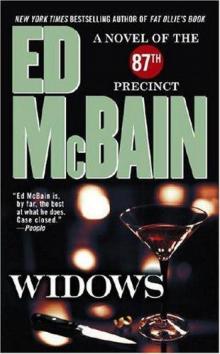 Widows
Widows Cop Hater
Cop Hater Transgressions
Transgressions